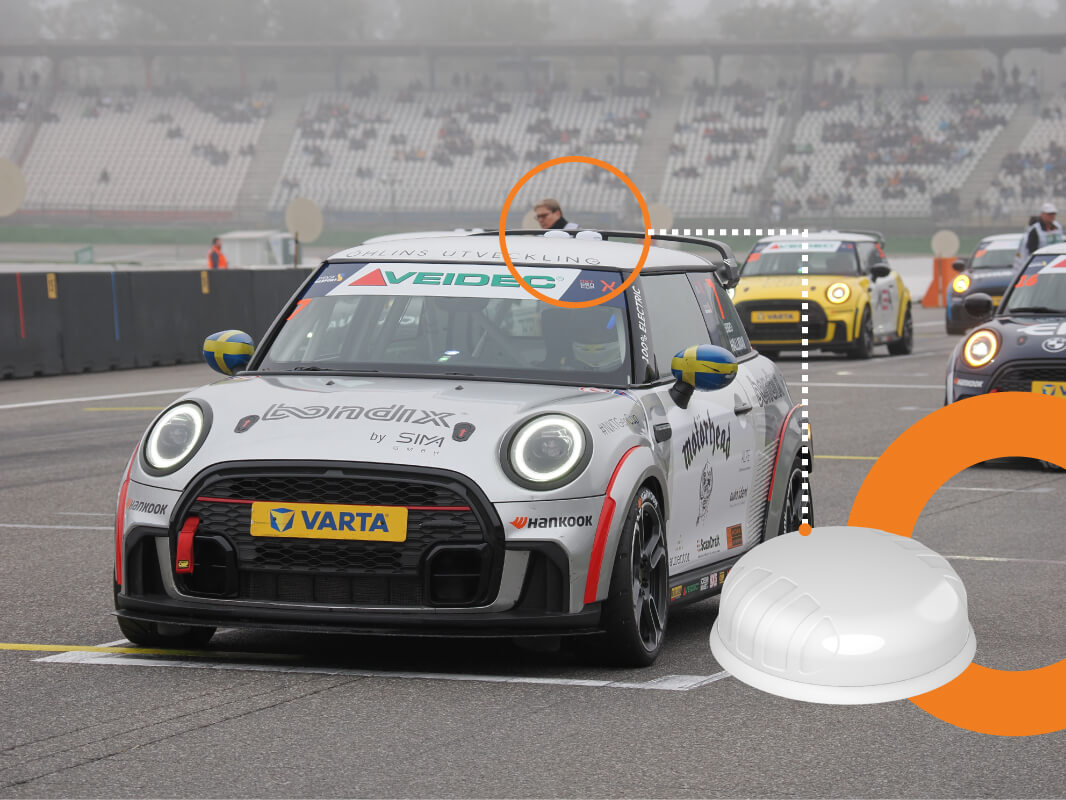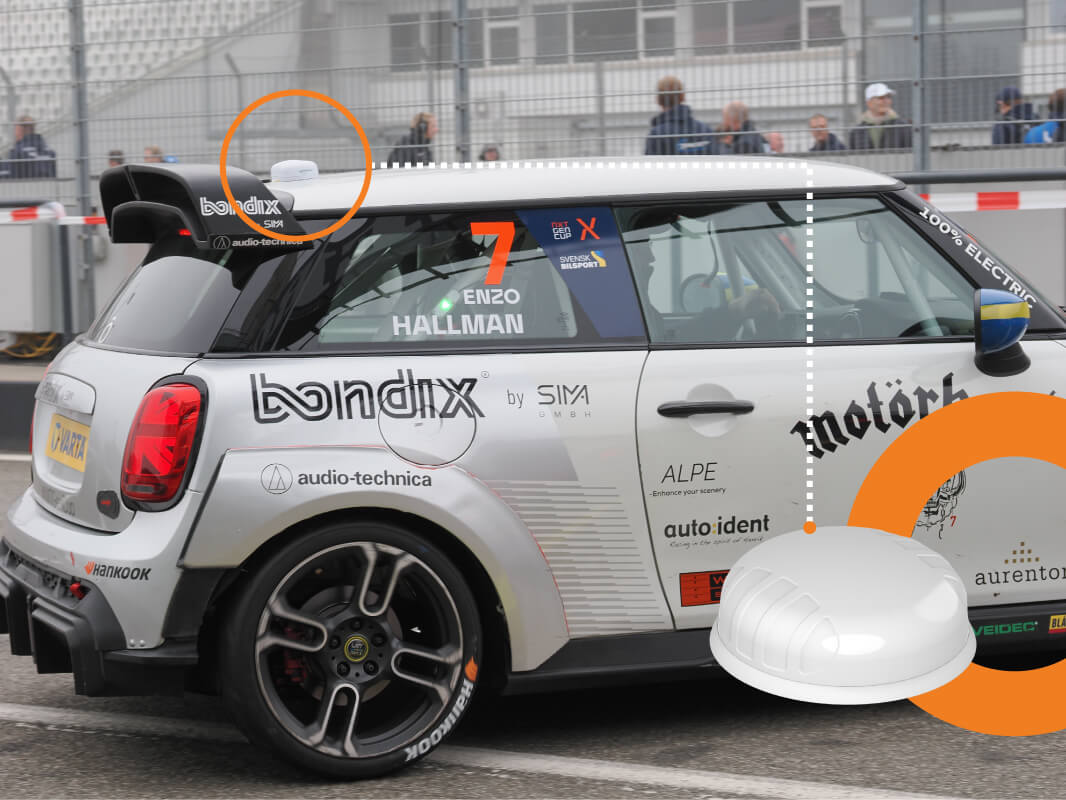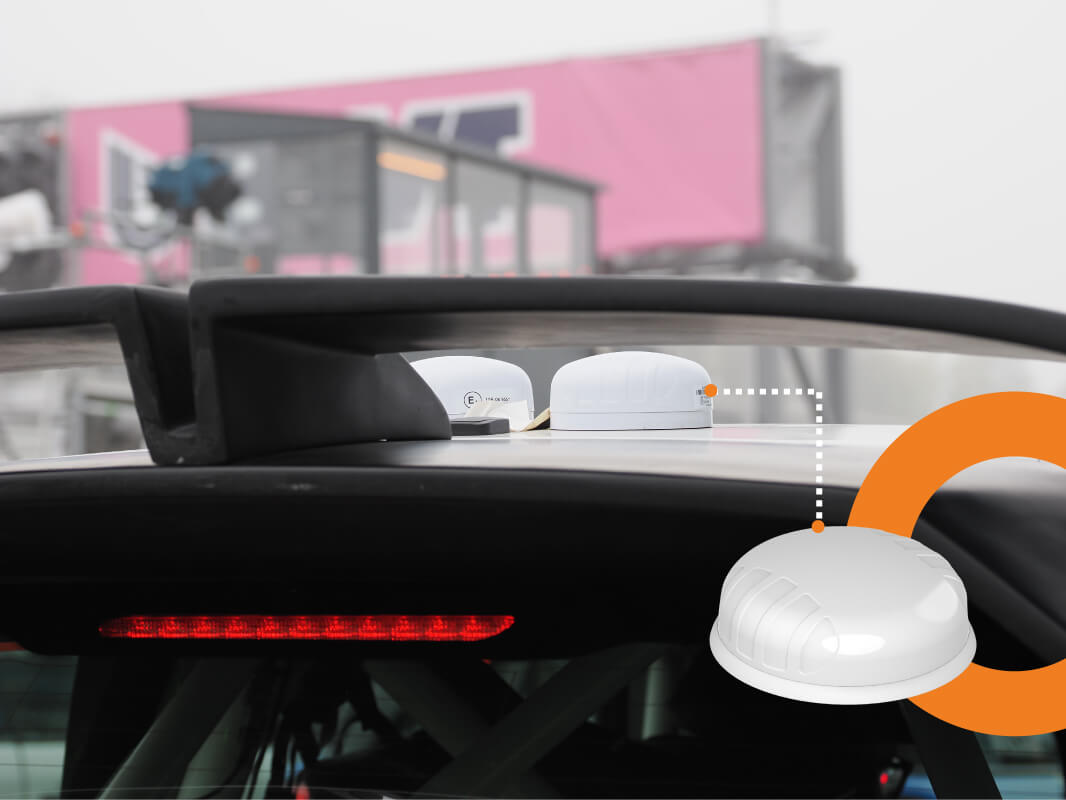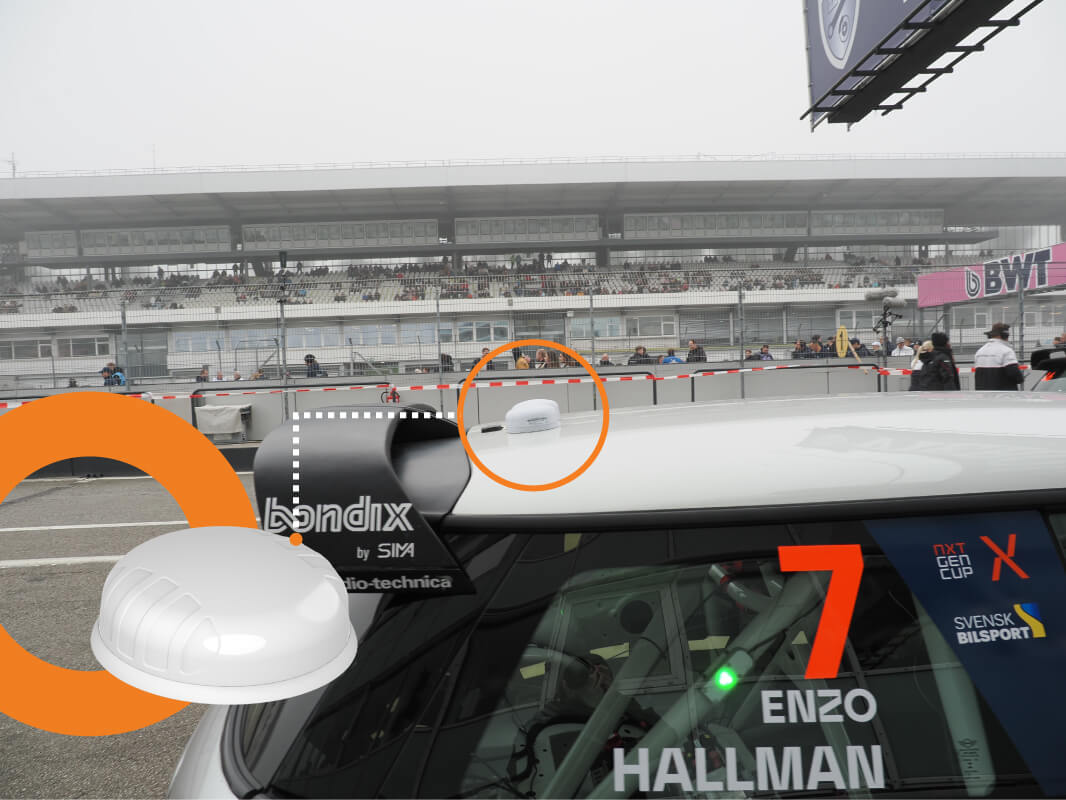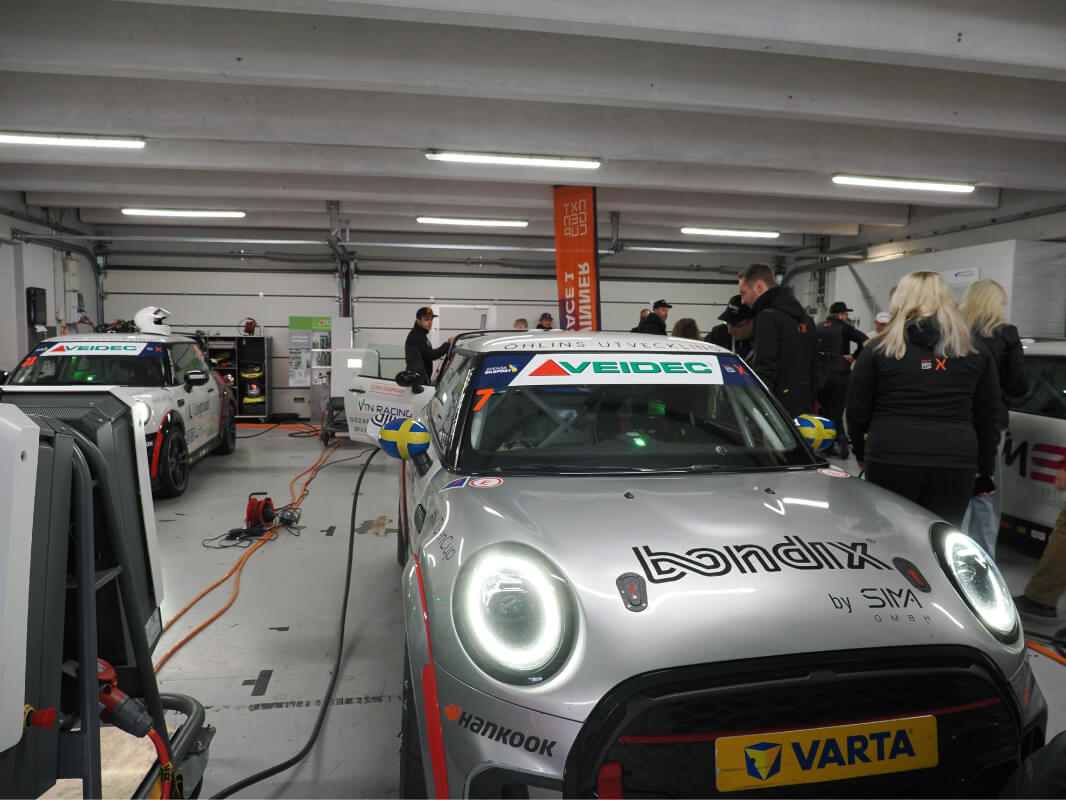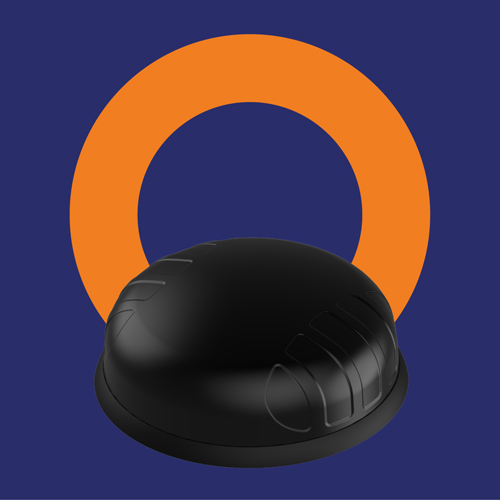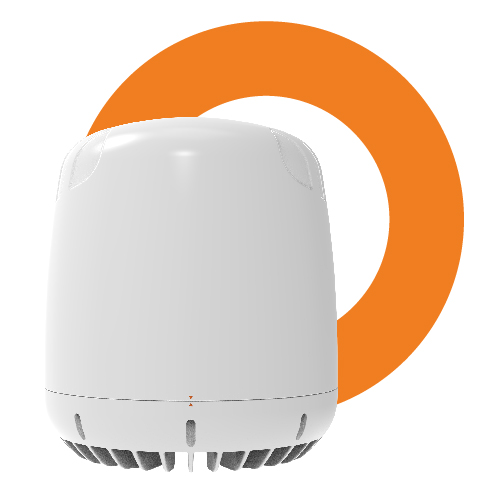Racing Without Limits: NextGenCup’s Connectivity Powered by POYNTING
Client Overview
NextGenCup is an innovative racing competition that combines high-performance motorsport with sustainability by featuring fully electric Mini Coopers. Reliable, high-speed connectivity is crucial for real-time telemetry, live video streaming, and seamless team operations during the races. This project was carried out in partnership with Nathiko B.V., specialists in advanced connectivity solutions.
Nathiko B.V., led by Anders Hansson, specialises in telemetry, communication setup, connectivity integration, IT setup, user interfaces, and software development for the NXTGenCup. They ensure seamless data flow from the race cars to the operational centre.
Challenge
Each racing car required a stable and high-speed internet connection to transmit telemetry and video footage in real-time. Given the high-speed and dynamic conditions of the races, maintaining uninterrupted data transmission was essential.
Additionally, the paddock faced network congestion issues due to thousands of spectators connecting to nearby cell towers. This competition for bandwidth posed a risk to critical team operations and decision-making, as slow or unstable connectivity could impact live data analysis and communication.
Before the installation of the PUCK antennas, the team experienced higher latency in data transmission. The improved setup with POYNTING’s antennas dramatically reduced this delay, enabling instantaneous data flow that had previously not been possible.
Solution
To address these challenges, POYNTING Antennas provided a dual-solution approach:
In-Car Connectivity
Each of the 21 electric Mini Coopers was equipped with a PUCK-2 and PUCK-5 antenna, paired with a Teltonika RUTX12 router. This setup ensured consistent 4G/5G connectivity, allowing real-time telemetry and live video streaming even under extreme racing conditions.
The main benefits for the racing team using the two POYNTING 5G PUCK antennas (PUCK-5 and PUCK-2), in combination with Teltonika Networks 4G routers and the Bondix by SIMA bonding software solution, are:
- Practically no latency or delays in data transmission. It is as if the driver management and safety officials are in the car, racing on the track. This allows immediate insight into all monitored safety-critical components—crucial for determining whether a car is race-ready. In worst-case scenarios, such as an incident, rescue services have real-time access to the car’s technical status, the driver’s data, and exact vehicle positioning, including the location of competing vehicles.
- Real-time race strategy adjustments are now possible, allowing teams to determine the optimal pace and strategically deploy 'joker' functions [1]— used to gain extra power for overtaking or defending track positions.
- Prior to the PUCK installation, data delay made it difficult to rely on live telemetry for high-stakes decisions. The upgrade allowed for genuine real-time responsiveness across the board.
[1] "joker functions" refers to temporary performance enhancements or special allowances that teams can strategically activate during a race to gain an advantage — typically extra power or boosts used for overtaking or defending.
Paddock Connectivity
To resolve network congestion in the paddock, a POYNTING WaveHunter antenna was deployed on land. Originally designed as a maritime dome antenna, the WaveHunter features 24 directional antennas with four polarisations. This advanced design improved signal reception and allowed connections to distant, less congested cell towers.
Inside the WaveHunter, the following components were installed:
- Six Teltonika TRB500 5G modems
- A Zyxel 12V 10 Gbps switch
- A virtual Bondix controller
A hybrid connectivity model was used, combining 5G cellular networks from three different providers with Starlink satellite internet. This approach maximised reliability and speed, ensuring a stable connection for paddock operations.
The POYNTING WaveHunter is an omnidirectional array of 12 5G high-performance MIMO directional antennas with four polarisations.
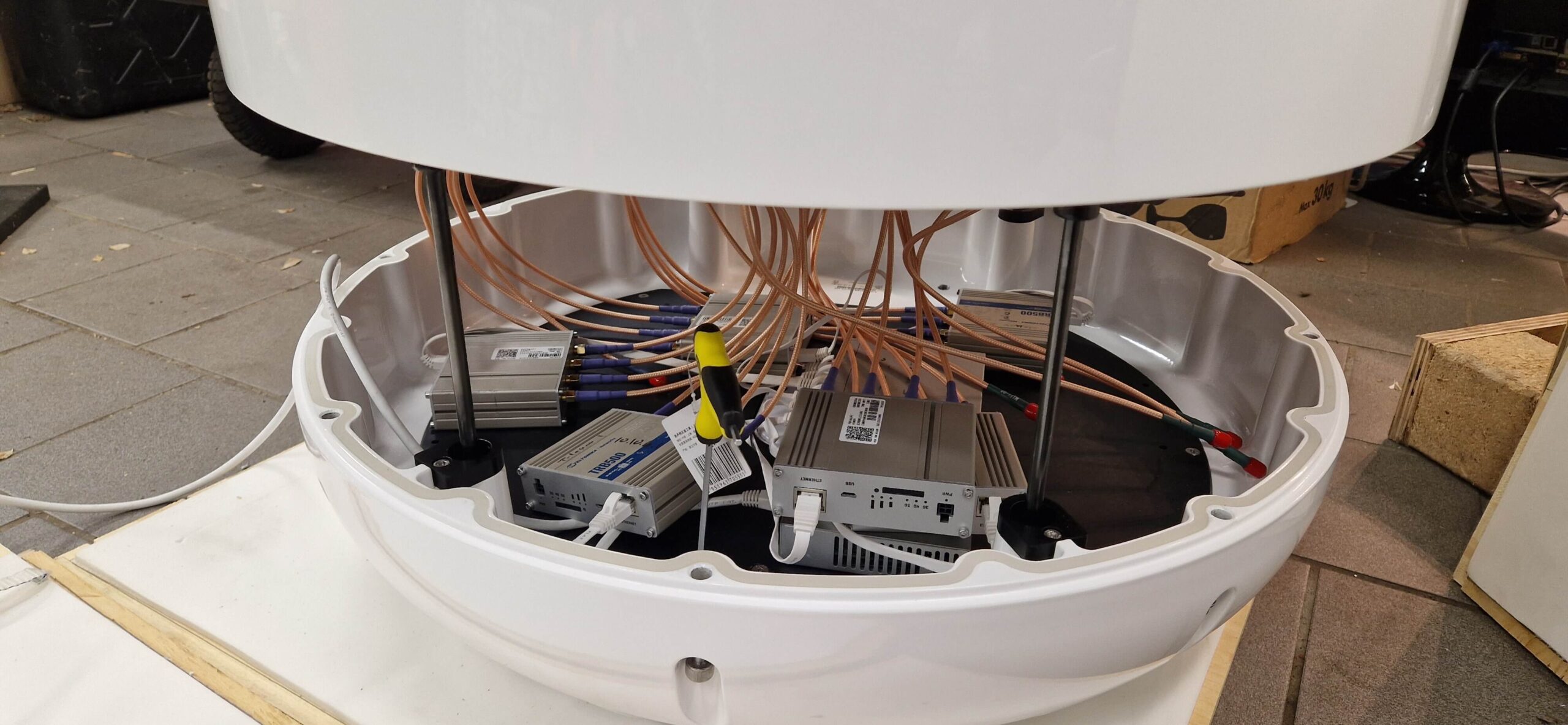
These antennas benefit from all the advantages of directional technology and boost data transfer up to four to five times the standard rates. All 24 antennas are linked to six Teltonika 5G routers, with support from the Bondix by SIMA solution and a sophisticated IT setup. Together, they create one massive, reliable data stream.
The POYNTING WaveHunter further enhanced the setup by connecting to base stations located farther from the track, effectively avoiding network congestion caused by visitors. This ensured a stable, reliable, and consistent connection for both data uploads and downloads, greatly improving the experience for reporters and online viewers. Photographers have also seen a noticeable improvement in upload speeds, giving them a competitive advantage in delivering timely content.
Results and Impact
Racing Cars
The electric Mini Coopers achieved stable, high-speed connectivity throughout the races. Real-time telemetry and video streaming remained uninterrupted, allowing teams to monitor performance and make data-driven decisions instantly.
Real-time access to performance data has enhanced both strategy and safety. Global fans now experience a 100% live view of the race, with instant updates and onboard video from the cars as events unfold on the track.
Paddock
The WaveHunter setup provided a stable and high-speed connection, supporting essential team operations. Initial speed tests showed 237 Mbps download and 236 Mbps upload speeds. After optimising the bonding configurations, speeds improved to 700 Mbps download and 300 Mbps upload, providing a seamless experience for race engineers and support staff.
The hybrid connectivity model ensured uninterrupted operations, allowing the team to adapt to fluctuating network conditions with minimal disruption.
There was no delay in data transmission, enabling real-time adjustments to racing strategy and continuous monitoring of critical safety components. This directly contributed to improved team performance and overall race safety.
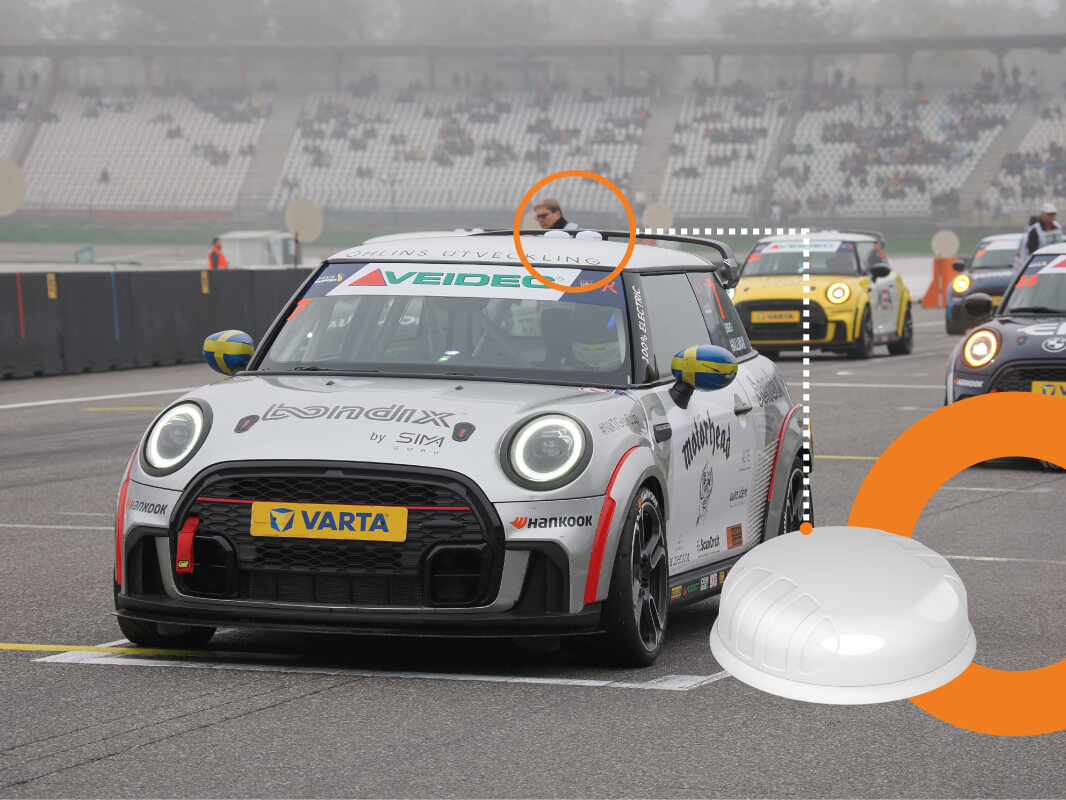
Key Takeaways
This project demonstrated the effectiveness of POYNTING Antennas in addressing connectivity challenges in high-performance environments.
- The PUCK-2 and PUCK-5 antennas ensured reliable, high-speed connectivity for the racing cars, enabling uninterrupted telemetry and video streaming.
- The WaveHunter’s advanced design and hybrid connectivity model provided a robust solution for managing network congestion in the paddock, ensuring stable internet access for critical team operations.
- The solution allowed racing teams to make real-time decisions with confidence, enhancing overall performance.
- The dramatic reduction in latency allowed for immediate safety decisions, enhanced race strategy, and true live broadcast experiences for fans and media.
- With Nathiko’s technical integration and Bondix bonding software, the entire system functions as one seamless, high-speed data ecosystem.
By ensuring stable, high-speed connectivity, this project highlighted how POYNTING’s innovative solutions can integrate with advanced technology and sustainable practices in motorsport.
Customer Experience
Marcus Dahlqvist, official NXTGen Cup videographer:
"Connectivity is great, just like working direct with the home office NAS unit."
Calvin de Groot, NXTGen Cup winner 2024:
"The speed and quality of the onboards in combination with the data telemetry is of high value. In racing it’s more about thousands of a second rather than improving big amounts of time at once. That’s why the data and onboards are so important."
Misha Charoudin: Nürburgring racer and automotive content creator:
"It was great for me as a content creator. You have the instant access to the onboards, to the live stream. You have actual live stream with cameras from 2024, it is fantastic, I was blown away."
Fredrik Lestrup, founder and series manager of NXTGen Cup:
"Our collaboration with POYNTING has been a tremendous success in terms of connectivity as we have proven for the last two seasons that everything is always connected.
Thanks to the excellent connectivity, our operation can remain location-independent and relies on remote connectivity even at tracks where most teams do not trust the local network availability.
We are using our POYNTING antennas for general internet connectivity in our hospitality area, but the key areas are with live telemetry of our e-safety platform that monitors every cell’s temperature – covering all batteries in all cars – both when stationary and racing. Key personnel get instant mobile alerts if any threshold values are exceeded.
Our live telemetry also sends information about push-to-pass to the TV production so that our viewers can see live which drivers are preparing to make an attempt to pass.
Video is the heaviest network load, which is sent both live from all cars to TV production during the race and made available in recorded video files to engineering and race control as the cars leave the track.
My organisation has learned that all data is available at all times – something we were told would be impossible. Using POYNTING antennas is a huge part of having a full field of 21 cars always online and for everyone to trust the data."
This reliability is further enhanced by the expertise of Nathiko and Anders Hansson, whose team ensures that every data point from the cars reaches the operational centre with no delay.
